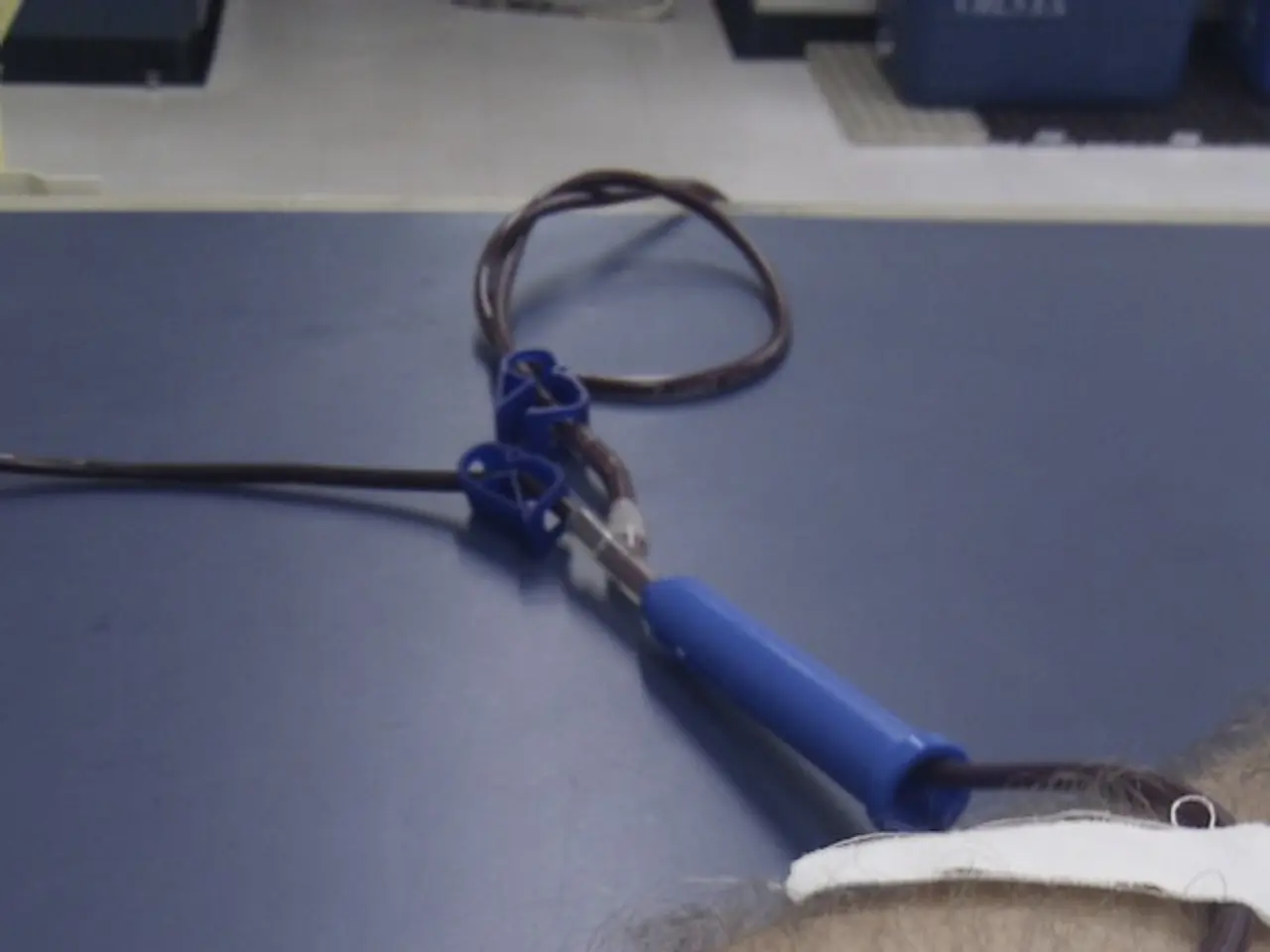Bulging forehead veins: Understanding their causes and potential remedies
Bulging forehead veins, while not always a cause for concern, can be a source of discomfort or aesthetic concern for some individuals. This article aims to shed light on the various factors that contribute to their appearance, potential symptoms, and available treatment options.
Genetics, lifestyle, and environmental factors play significant roles in the development of bulging forehead veins. Genetic predisposition increases the risk of visible or spider veins, as blood vessel fragility and dilation tendencies can be inherited. Prolonged or excessive sun exposure damages collagen and the walls of small blood vessels, making them more visible. As skin ages, it becomes thinner and loses elasticity, making underlying veins more prominent.
Hormonal fluctuations during pregnancy, menopause, or from hormonal contraceptives can cause veins to dilate and become more visible on the face and forehead. Certain skin conditions, such as rosacea, increase facial redness and inflammation, often coinciding with visible or bulging facial veins.
Lifestyle factors, such as alcohol consumption, smoking, lack of exercise, and poor diet, can weaken vascular health, increasing vein prominence. Physical trauma or skin injury can damage superficial blood vessels, leading to visible bulging veins. High blood pressure can also make veins more prominent or cause vessels to bulge.
In some cases, bulging forehead veins may indicate underlying vascular conditions, such as venous insufficiency or arteriovenous fistula, which can lead to potentially life-threatening complications. If forehead veins appear suddenly, are painful, or associated with other symptoms like headaches, dizziness, blurred or double vision, pain or tenderness near the temples, mouth, or jaw, medical evaluation is advised.
For those seeking to reduce the visibility of forehead veins, electrosurgery or sclerotherapy may be considered. Electrosurgery uses high-frequency electrical currents to cut or destroy blood vessels, while sclerotherapy involves injecting a salt solution directly into a vein, causing it to collapse. Before deciding on a treatment, it is essential to carefully consider all the benefits and risks associated with surgical and nonsurgical treatments.
It is important to note that bulging forehead veins rarely indicate a medical emergency. However, if they suddenly appear or are accompanied by symptoms, prompt medical attention is advised to rule out underlying vascular conditions. The skin becomes thinner as the body ages, which can make veins appear more pronounced or more significant than they are.
In conclusion, bulging forehead veins are often caused by a combination of genetic predisposition, environmental factors, hormonal influences, vascular health issues, and lifestyle. By understanding the potential causes and seeking medical advice when necessary, individuals can make informed decisions about their treatment options and maintain their overall vascular health.
- Bipolar disease, diabetes, colitis, psoriasis, and Crohn's disease are not directly linked to the appearance of bulging forehead veins, but they are health conditions individuals should manage for overall well-being.
- Psoriatic arthritis, HIV, and Non-Small Cell Lung Cancer (NSCLC) are diseases that require specific medical attention and do not have a direct connection to the visibility of forehead veins.
- A type of arthritis, psoriatic arthritis, can cause inflammation in the skin, which may enhance the appearance of facial veins, particularly if they are already visible.
- Depression, headaches, and tension headaches are not related to bulging forehead veins, but they are common health concerns that individuals seeking information might be interested in within the health-and-wellness context.
- Variocose veins and spider veins in other parts of the body, such as the legs, could indicate poor vascular health, but their presence does not directly relate to bulging forehead veins.
- Botox injections are not primarily used for treating bulging forehead veins; they are more commonly administered for cosmetic purposes, such as wrinkle reduction.
- Science has made significant strides in understanding the factors contributing to the appearance of bulging forehead veins, and the predictive factors can help individuals make informed decisions about their skin care and vascular health.
- In skin care, aging, sun exposure, and poor skin care practices can affect the visibility of forehead veins, making them more prominent or noticeable.
- As science advances, new treatments for reducing the appearance of bulging forehead veins, such as laser therapy or other minimally invasive procedures, may become available.
- It's essential to maintain a healthy diet, exercise regularly, and avoid excessive sun exposure to promote vascular health and keep facial veins less visible.
- A q-tip test or ultrasound can help diagnose underlying vascular conditions, such as ulcerative colitis or tension headaches, which might be indirectly related to the visibility of forehead veins.




